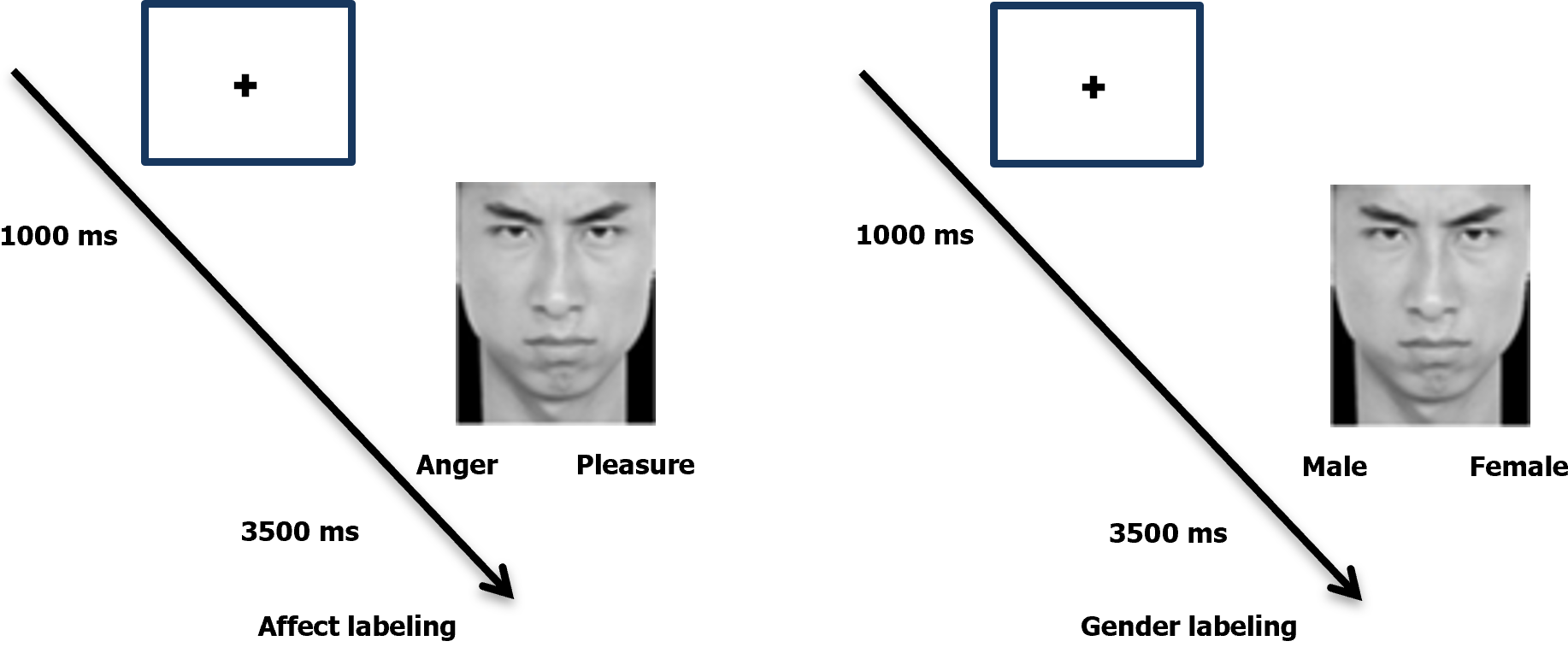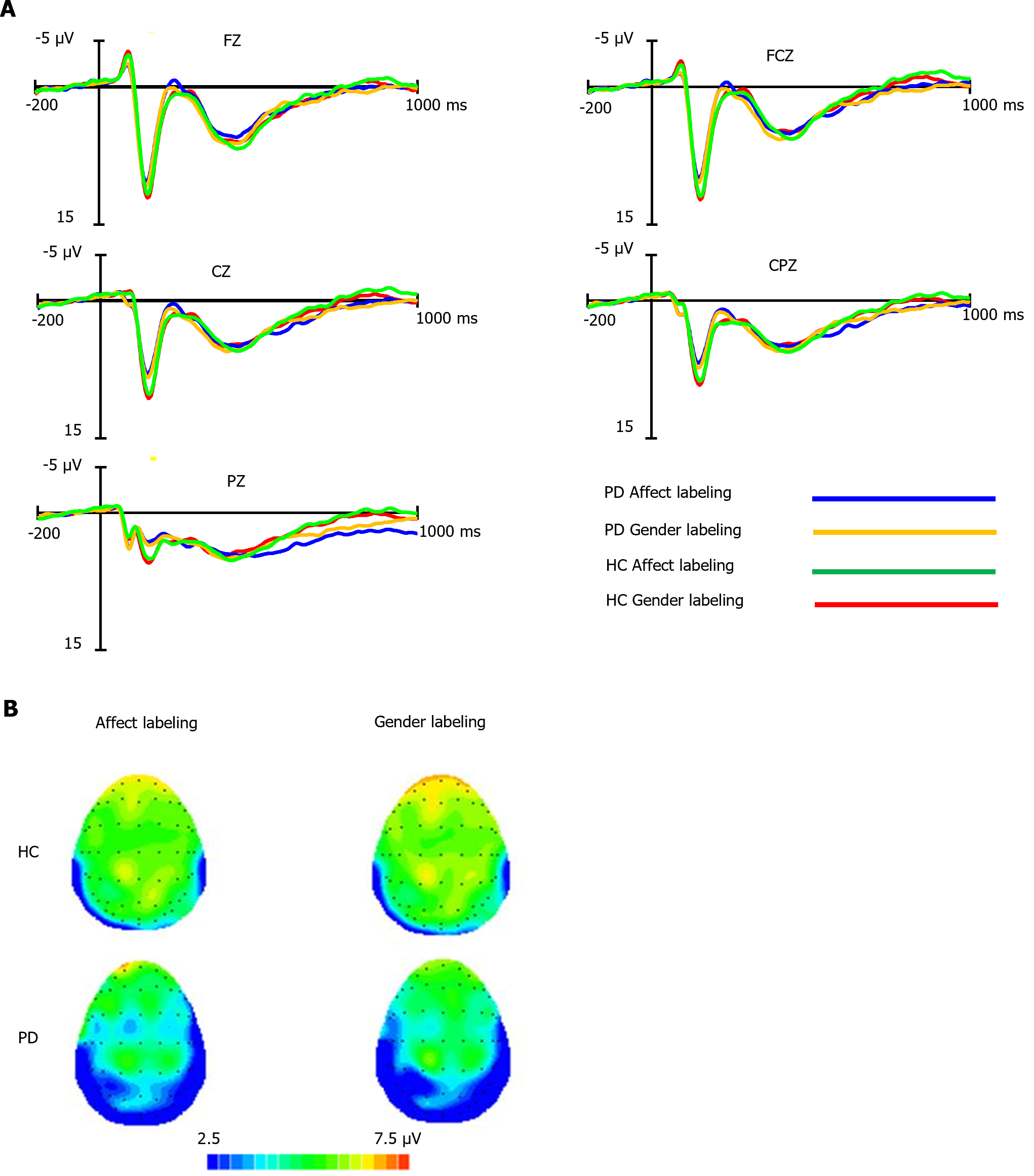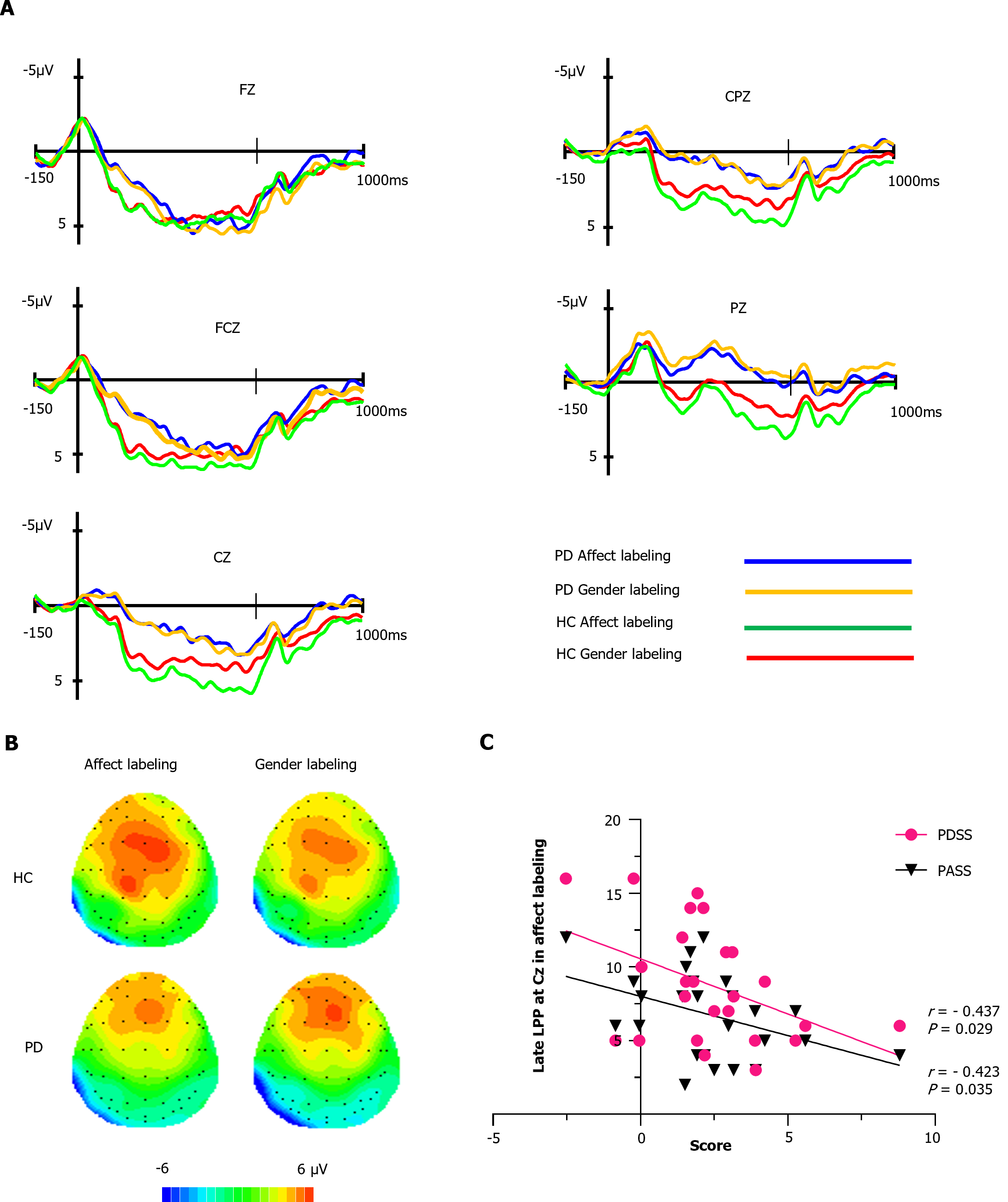Copyright
©The Author(s) 2024.
World J Psychiatry. Feb 19, 2024; 14(2): 234-244
Published online Feb 19, 2024. doi: 10.5498/wjp.v14.i2.234
Published online Feb 19, 2024. doi: 10.5498/wjp.v14.i2.234
Figure 1 Task design.
In the left panel, participants engage in affect labeling trials by selecting the suitable affect label that best describes the facial expression of the target face. In contrast, the right panel demonstrates gender labeling (control) trials, where participants are tasked with selecting the name corresponding to the gender-appropriate category of the target face.
Figure 2 Early late positive potential amplitude.
A: Illustrates the early late positive potential amplitudes of each electrode site for the healthy control and panic disorder groups under the affect labeling and gender labeling conditions. There were no significant main effects of group, condition, or electrode, and no significant interaction effects were observed (P > 0.05 for all comparisons); B: Displays the topographic maps of the two groups under the two conditions. PD: Panic disorder; HC: Healthy control; Fz: Frontal midline; FCz: Frontocentral midline; Cz: Central midline; CPz: Centroparietal midline; Pz: Parietal midline.
Figure 3 Late positive potential amplitude.
A: Illustrates the early late positive potential (LPP) amplitudes at each electrode site for the healthy controls (HC) and panic disorder (PD) groups under affect labeling and gender labeling conditions. Firstly, a 2 × 2 × 5 repeated measures analysis of variance (350-630 ms) revealed significant main effects of electrode (P < 0.001) and a significant group × condition interaction effect (P = 0.02). Post-hoc comparisons indicated that the HC group exhibited higher LPP amplitudes in the affect labeling condition compared to the gender labeling condition (P = 0.044), while there was no significant difference in the PD group (P > 0.05). Secondly, no significant effects of electrode, condition, group, or interactions were observed in the 630-1000 ms time window (P > 0.05 for all comparisons); B: Presents topographic maps of the two groups under the two conditions; C: Demonstrates negative correlations between LPP amplitudes at the CZ site during affect labeling and Panic Disorder Severity Scale scores as well as Panic-Associated Symptom Scale scores in PD patients (P = 0.029, P = 0.035, respectively). PD: Panic disorder; HC: Healthy control; PDSS: Panic Disorder Severity Scale; PASS: Panic-Associated Symptom Scale; Fz: Frontal midline; FCz: Frontocentral midline; Cz: Central midline; CPz: Centroparietal midline; Pz: Parietal midline.
- Citation: Wang HY, Li LZ, Chang Y, Pang XM, Zhang BW. Impaired implicit emotion regulation in patients with panic disorder: An event-related potential study on affect labeling. World J Psychiatry 2024; 14(2): 234-244
- URL: https://www.wjgnet.com/2220-3206/full/v14/i2/234.htm
- DOI: https://dx.doi.org/10.5498/wjp.v14.i2.234















